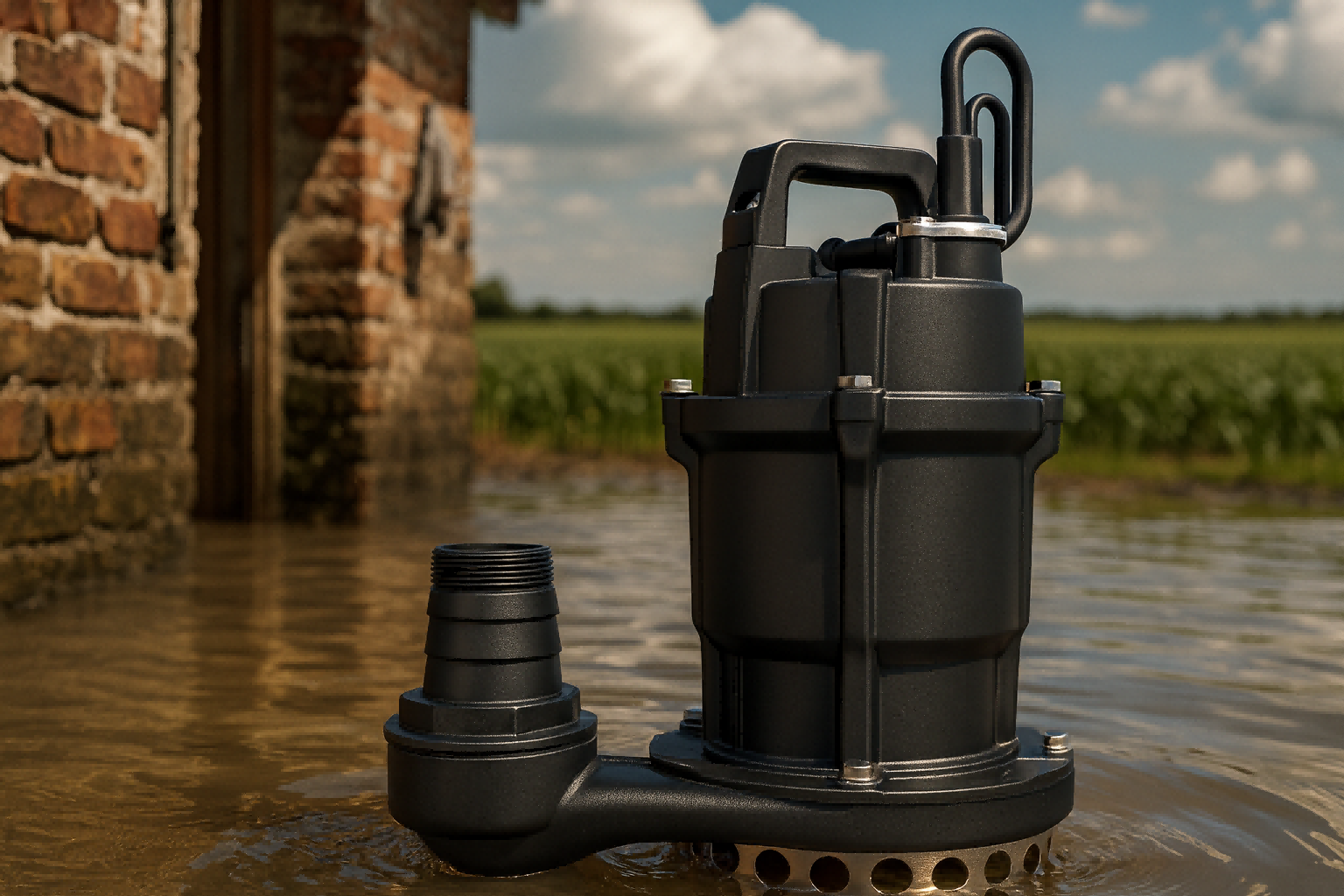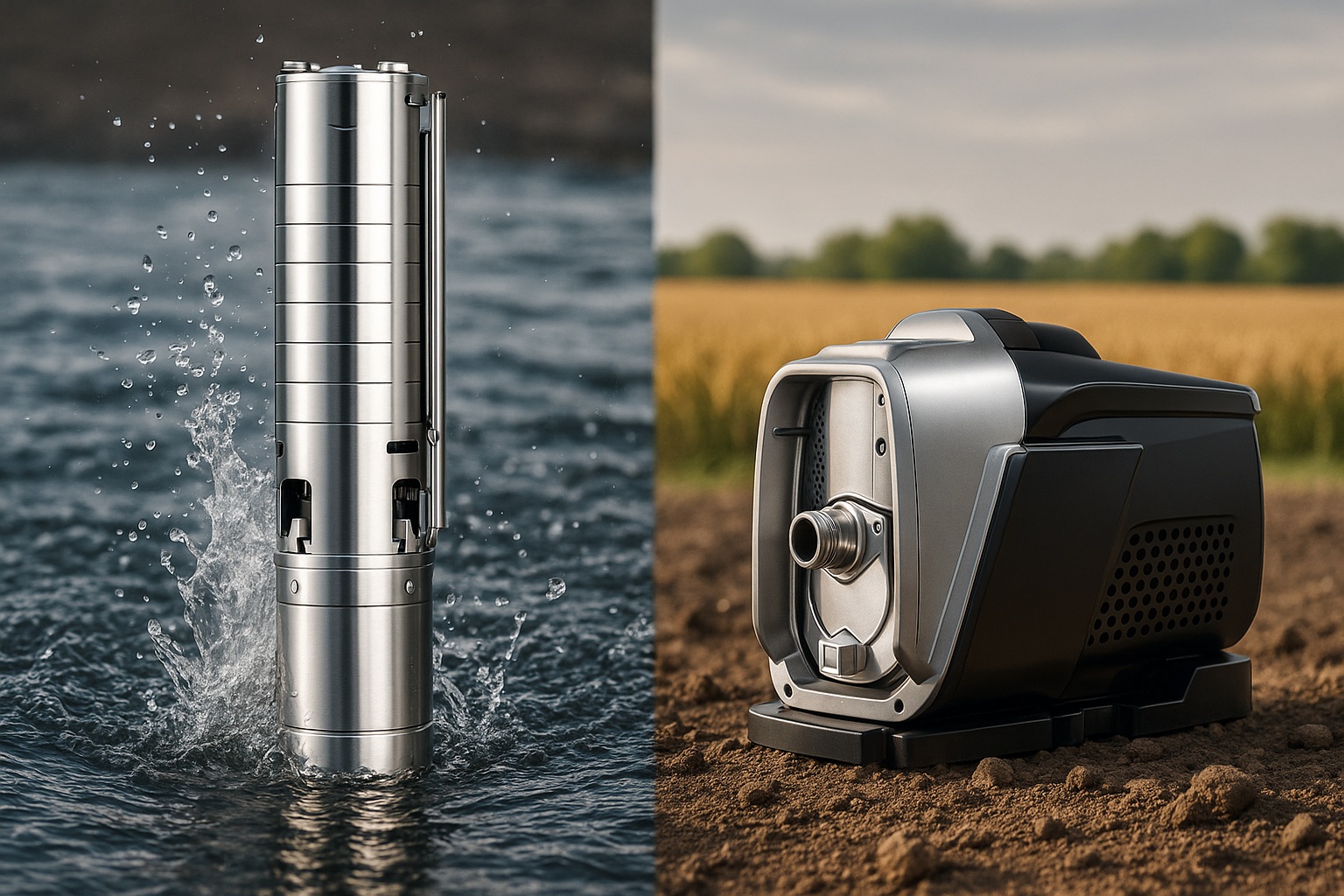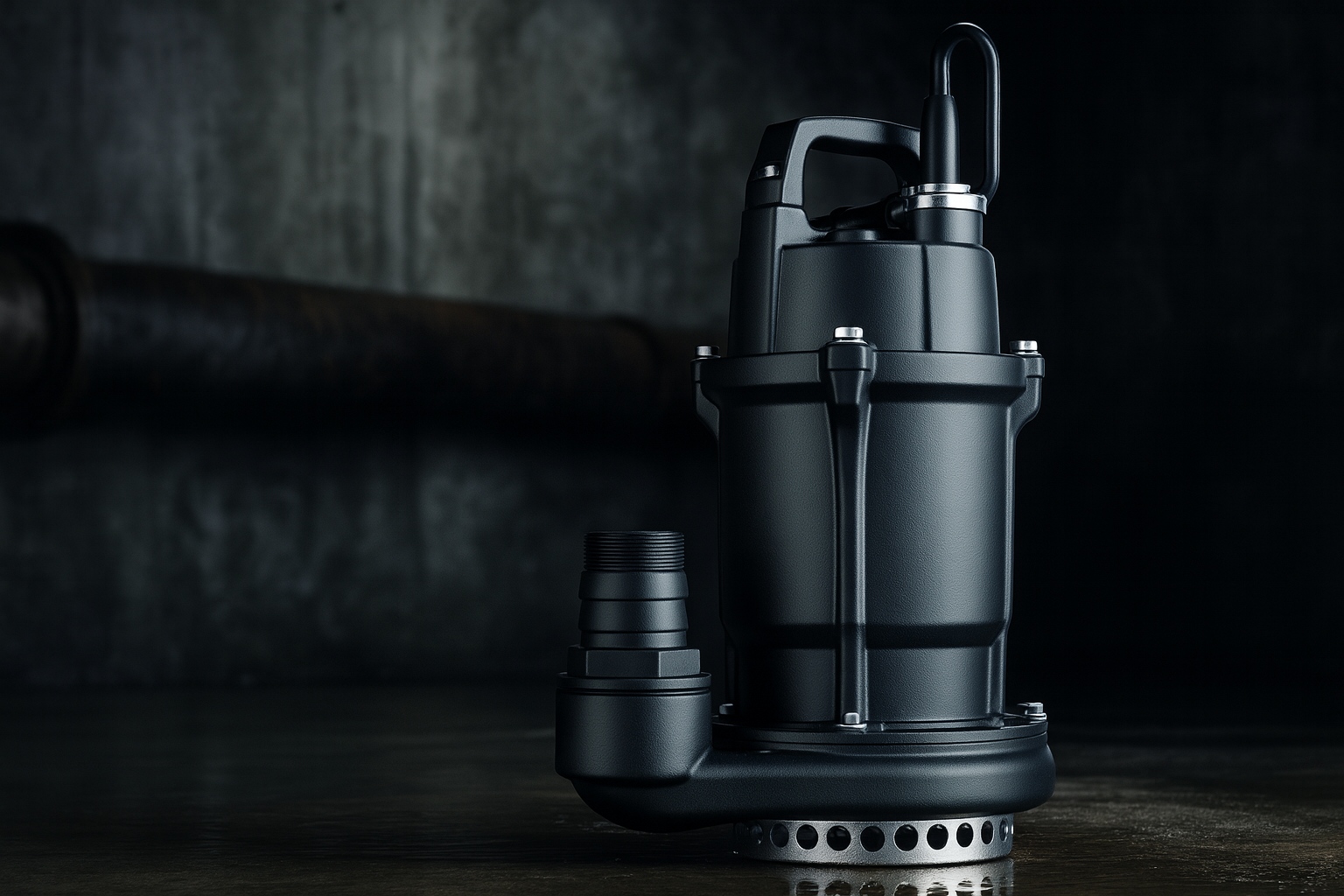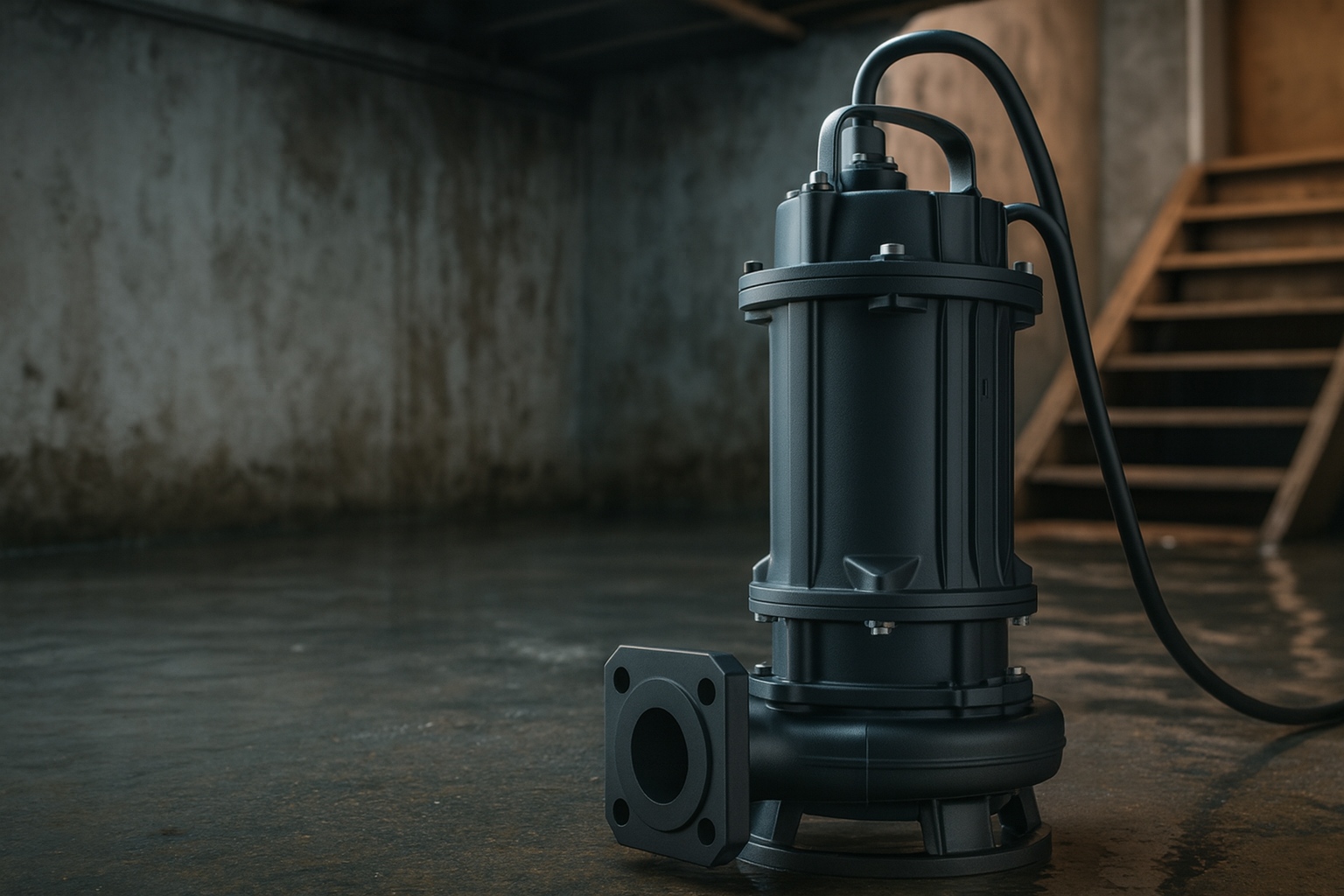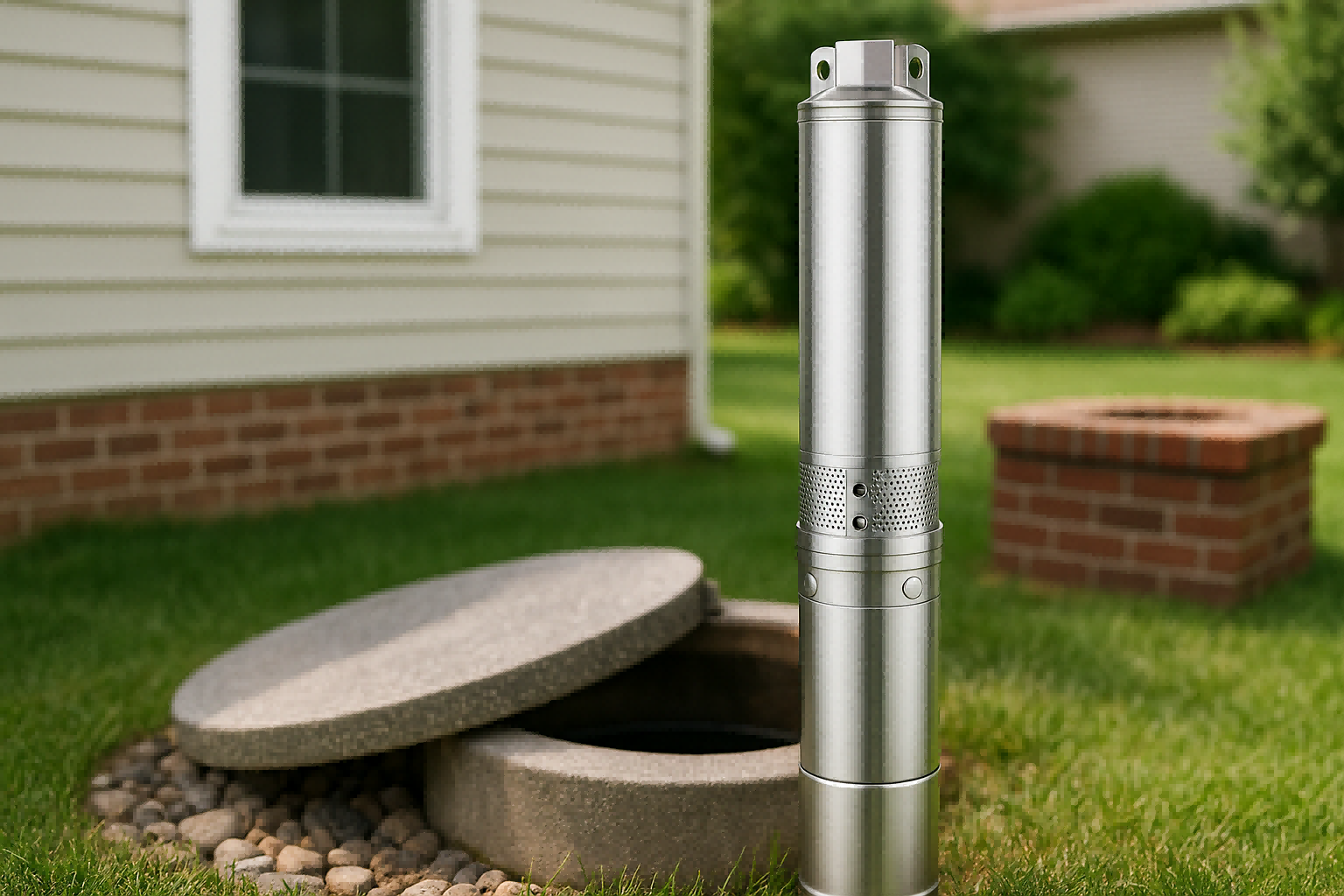Low water pressure disrupts daily tasks, from showering to washing dishes.
This common frustration makes simple activities feel inefficient.
A booster pump restores comfort and function by delivering strong, consistent pressure.
A water pressure booster pump is an electromechanical system designed to increase water pressure in a plumbing network.
It works by using a motor to spin an impeller, which draws water in and pushes it out at a higher velocity.
An integrated controller with a pressure sensor monitors the system, automatically activating the pump when pressure drops and stopping it when the desired pressure is reached, ensuring a constant and reliable flow.
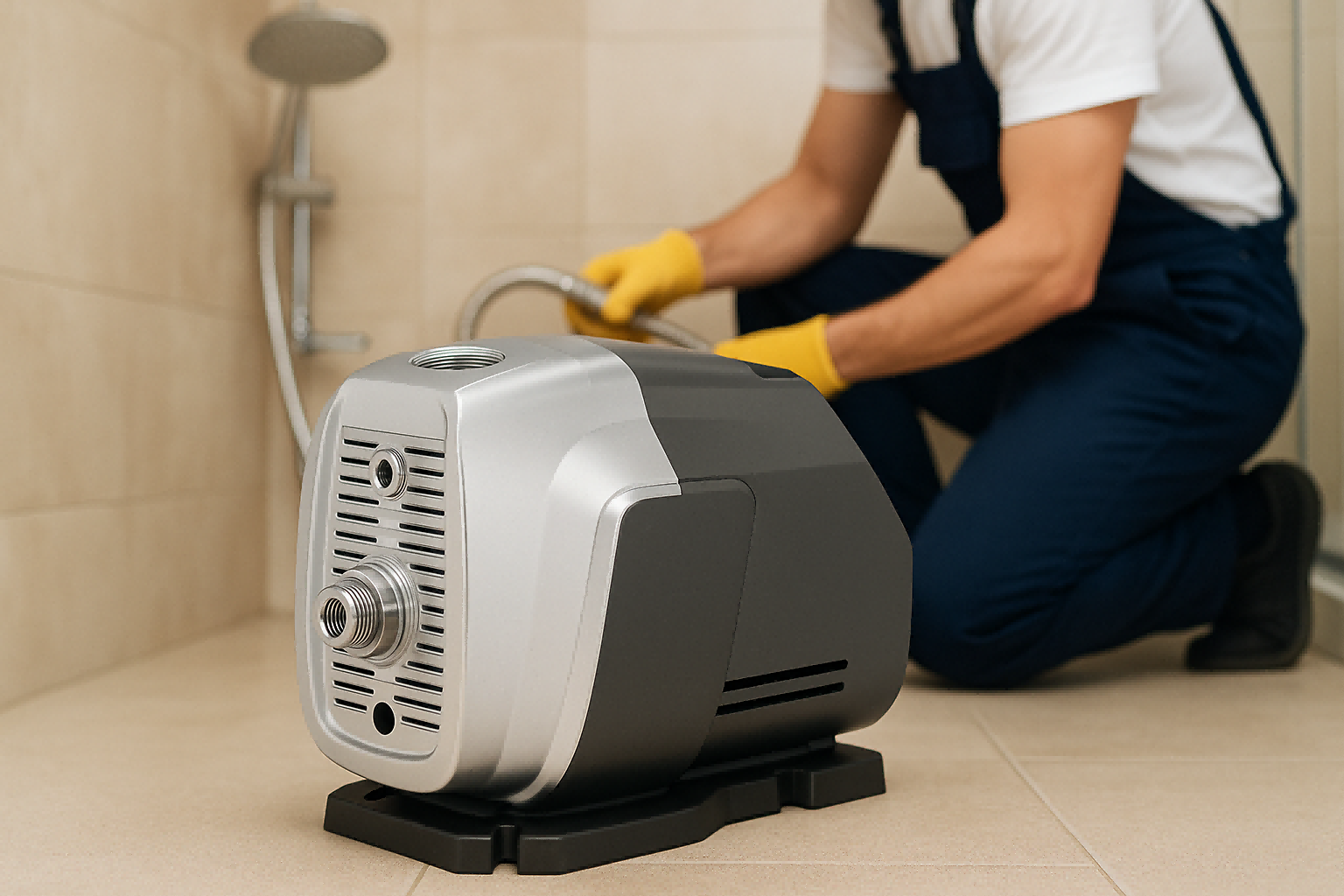
This process appears straightforward, but the technology inside a modern booster pump is highly advanced.
These systems are engineered for quiet operation, energy efficiency, and exceptional longevity.
To truly understand how they work, we need to look closer at the core technologies that drive them, the durable materials they are made from, and the intelligent systems that protect them from damage.
Let's explore the key components that make these pumps a powerful solution for any property.
What Is the Core Drive Technology?
Noisy pumps and fluctuating water pressure are common household complaints.
These issues are not just annoying; they point to inefficient operation.
Modern pumps use advanced motor and drive technology for quiet, constant, and highly efficient performance.
The core of a modern booster pump is a high-efficiency motor, typically a Permanent Magnet Synchronous Motor (PMSM), managed by a Variable Frequency Drive (VFD).
This combination allows the pump to precisely adjust its speed in real-time.
It ensures constant pressure while operating quietly and consuming less energy.
The drive technology is the heart and brain of a water pressure booster pump, defining its performance, efficiency, and user experience.
Unlike older pumps that run at a single, fixed speed, modern systems utilize a sophisticated pairing of a specialized motor and an intelligent controller.
This synergy delivers performance that is not only powerful but also adaptable and quiet.
Key Performance Features
The combination of a Permanent Magnet Synchronous Motor (PMSM) and a Variable Frequency Drive (VFD) controller offers several distinct advantages that set these pumps apart from traditional models.
These features are engineered to enhance user comfort, protect the plumbing system, and ensure the long-term mechanical health of the pump itself.
- Silent Operation: The advanced design of the PMSM motor, combined with the smooth power delivery from the VFD, results in extremely quiet performance. Many high-end models operate at a noise level of 50 decibels or less, which is comparable to a quiet library or a gentle rainfall. This ensures the pump can be installed without causing disruptive noise in a home or commercial building.
- Precise Pressure Customization: The VFD allows the user to set a precise target water pressure. The system offers a wide adjustment range, often from 20% to 95% of the pump's maximum pressure capability. This flexibility means the pump can be perfectly tailored to the specific needs of any application, from a small apartment to a large home with extensive irrigation.
- Soft Start & Soft Stop: This function is critical for the pump's longevity. Instead of starting and stopping abruptly, the VFD gradually ramps the motor's speed up and down. This gentle acceleration and deceleration significantly reduces mechanical stress on the motor, bearings, and impeller. It also prevents a damaging hydraulic phenomenon known as water hammer, where sudden stops create shockwaves in the plumbing pipes.
How Are They Built for Durability?
A water pump is a long-term investment that can fail if built with subpar materials.
Corrosion and mechanical wear lead to premature breakdowns and costly replacements.
High-grade components are selected to ensure the pump operates reliably for years, providing peace of mind.
True durability is achieved by using superior materials for every critical component.
This includes high-grade silicon steel for motor efficiency, heat-resistant magnets, premium bearings for smooth operation, and corrosion-resistant stainless steel for the impeller, which is constantly in contact with water.
This focus on quality materials ensures a long and trouble-free service life.
The reliability and lifespan of a water pressure booster pump are determined by the quality of its internal components.
Engineers focus on material selection and mechanical design to create a product that can withstand the constant demands of operation.
From the motor's core to the impeller that moves the water, every part is chosen for performance and a long service life.
This commitment to quality is what separates a standard pump from a truly robust and durable one.
The Anatomy of a Durable Motor
The motor is the powerhouse of the pump, and its construction directly impacts efficiency and longevity.
Engineers use specialized materials to maximize performance while managing heat, which is a primary cause of motor failure.
- Advanced Stator Design: The stator, the stationary part of the motor, is built for peak efficiency. It often features 600-grade silicon steel to reduce energy losses. A low temperature rise rating (≤50K) demonstrates excellent heat management, contributing directly to a longer life. The use of Class F insulation wire ensures the motor windings can resist high temperatures without degrading.
- High-Performance Rotor Magnet: The rotor, the spinning component, uses powerful ferrite magnets that can withstand temperatures up to 150°C without losing their magnetic properties. This ensures consistent motor performance even under heavy loads.
The Importance of Mechanical Components
Beyond the motor's core, the mechanical parts that support its operation are just as critical for long-term reliability.
- Premium Bearings: High-quality bearings are essential for reducing friction and noise. Top-tier pumps use bearings from reputable manufacturers that offer significantly higher precision, quieter operation, and a longer lifespan compared to standard alternatives.
- Corrosion-Resistant Impeller: The impeller is the component that spins to move water. It is constantly submerged, making it vulnerable to corrosion. Using premium materials like AISI304 stainless steel ensures the impeller resists rust and wear, maintaining hydraulic performance and ensuring the water remains clean.
What Protects the Pump’s Electronics?
Pumps often operate in damp basements or utility closets where moisture is a constant threat.
This environment can be disastrous for sensitive electronic control boards.
An unprotected circuit board can short-circuit and fail, rendering the entire pump useless.
To ensure uncompromising reliability, the main controller board is completely sealed using a technique called potting.
The entire circuit board is encased in a waterproof, non-conductive compound.
This creates an impenetrable barrier against moisture, dust, and vibration, which is proven to dramatically extend the controller's operational lifespan.
One of the most significant innovations in modern pump design is the method used to protect the electronic controller, or PCB (Printed Circuit Board).
This is the brain of the pump, responsible for managing the VFD, processing sensor data, and running protection routines.
Given that pumps are often installed in environments with high humidity or potential for condensation, protecting these electronics is paramount for long-term reliability.
The most effective solution is potting the entire controller.
Benefits of Electronic Potting
Potting involves completely encapsulating the PCB and its components in a solid, durable compound.
This process transforms a vulnerable electronic assembly into a robust, environmentally sealed unit.
The advantages of this approach are substantial and directly impact the pump's lifespan and dependability.
- Total Environmental Shielding: The potting compound creates a 100% waterproof and airtight seal. This typically earns the electronics an IP67 protection rating, meaning they are completely protected from dust and can be submerged in water without damage. This single feature is claimed to prevent up to 95% of failures caused by moisture and condensation.
- Significant Lifespan Extension: By isolating the sensitive electronics from the harsh operating environment, potting is projected to extend the controller's life by an additional 3 to 5 years. This protection against environmental factors is a key contributor to the overall durability of the pump system.
The table below highlights the differences between a standard, unprotected controller and one that has been potted.
| Feature | Standard Controller | Potted Controller |
|---|---|---|
| Moisture Protection | Exposed circuits | 100% waterproof seal (IP67) |
| Dust & Debris Risk | High | Completely sealed |
| Vibration Damage | Vulnerable | Components are secured in place |
| Lifespan | Shorter | Extended by 3 to 5 years |
| Common Failures | Moisture-related shorts | Protected from environmental failures |
How Do Smart Pumps Protect Themselves?
Unexpected problems like power surges, city water cuts, or plumbing leaks can destroy a pump.
Running a pump without water (dry running) can cause it to overheat and fail in minutes.
Smart pumps incorporate a suite of built-in safety features that actively monitor conditions and shut down to prevent catastrophic damage.
Modern booster pumps are equipped with a comprehensive set of digital protection functions.
These systems constantly monitor for dozens of potential faults, including electrical issues, overheating, blockages, and water shortages.
When a problem is detected, the pump can automatically adjust its operation or shut down completely to protect itself, then attempt to restart when conditions are safe.
The "intelligence" of a smart pump lies in its ability to self-diagnose and protect itself from a wide range of potential faults.
This is accomplished through a sophisticated system of sensors and software algorithms that continuously monitor the pump's operating conditions.
This built-in protection suite acts as a vigilant guardian, safeguarding the investment by preventing damage from common and uncommon problems alike.
These systems can typically protect against more than a dozen distinct issues.
Electrical and Thermal Safeguards
The pump's controller constantly monitors the incoming power supply and its own internal temperatures to prevent damage from electrical faults or overheating.
- Input Voltage Protection: Guards the pump against damage from voltage that is too high or too low from the power grid.
- Overcurrent Protection: If the motor draws too much electrical current, which can happen if the impeller is blocked, the pump shuts down to prevent motor burnout.
- Stall Protection: Detects if the motor is unable to spin and cuts power to prevent damage.
- Overheating Protection: Multiple sensors monitor the temperature of the driver board, the motor, and even the water itself, shutting the pump off if temperatures exceed safe limits.
Intelligent System and Sensor Protections
Beyond electrical monitoring, the pump uses smart algorithms to handle operational and environmental hazards.
- Water Shortage (Dry Run) Protection: This is one of the most critical safety features. If the pump detects there is no water to move, it initiates an intelligent recovery algorithm. For example, it might first try to self-prime for several minutes. If unsuccessful, it will enter a "sleep" mode, then periodically re-check for water at increasing intervals (e.g., 5 minutes, then 2 hours, then 6 hours). This prevents the pump from burning out while conserving energy.
- Antifreeze Protection: In cold climates, the pump can automatically run for short periods if the water temperature drops near freezing, preventing ice from forming and damaging the pump.
- Pipeline Leak Warning: The system can detect small, continuous drops in pressure that may indicate a leak in the plumbing, alerting the user to a potential problem.
- Sensor Failure Warnings: The pump is self-aware. If one of its own critical sensors (like pressure or temperature) fails, it will generate a specific warning, making troubleshooting much easier.
How Can You Monitor and Control the Pump?
Complex machinery can often be intimidating, with confusing controls and no clear feedback.
Users want to make simple adjustments without needing to consult a thick instruction manual.
An intuitive, user-friendly interface with clear visual indicators makes managing the system effortless for anyone.
A well-designed control panel with just a few buttons and a series of clear LED indicators provides straightforward operation.
Users can easily power the pump on and off, adjust the target pressure, and even scroll through real-time performance data.
This makes it simple to both control and understand what the pump is doing at any given moment.
Despite the advanced technology working inside, a modern booster pump is designed for simple and intuitive user interaction.
The interface provides both easy control over the pump's primary functions and deep insight into its real-time operating status.
This combination of simplicity and transparency empowers the user to manage their water system effectively.
A typical interface features just five buttons and a series of seven distinct LED indicators to communicate everything you need to know.
Simple Controls for Everyday Use
The most common tasks are made incredibly simple through a logical button layout.
- On/Off: A short press of the power button is all that is needed to start or stop the pump.
- Pressure Adjustment: Simple UP and DOWN arrow buttons allow for quick and easy adjustment of the target water pressure.
- Factory Reset: If needed, returning the pump to its original settings can be done with a long press of the power button for 3 seconds.
Accessing Real-Time Performance Data
For users who want more insight, the system provides access to a wealth of live operational data.
A long press of a mode or display button typically cycles the screen through several key metrics, offering a transparent look into the pump's performance and condition.
| Data Code | Parameter | Why It's Useful |
|---|---|---|
A.xx |
Water Temperature | Monitors for potential overheating conditions. |
P.xxx |
Power Consumption (W) | Tracks real-time energy usage and efficiency. |
xxxx |
Motor Speed (RPM) | Shows how hard the pump is currently working. |
U.xxx |
Input Voltage (V) | Helps diagnose issues with the power supply. |
t.xx |
PCB Temperature | Confirms the electronic controls are operating safely. |
Understanding the LED Indicators
At-a-glance LED indicators provide immediate visual feedback on the pump's current status, so you don't have to guess what it's doing.
These lights instantly show if the pump is running in constant pressure mode, if it has detected a pipeline leak, if there is a voltage fault, or if it is in a water shortage state.
Conclusion
A modern water pressure booster pump is a smart, durable, and highly efficient solution.
Its advanced motor, comprehensive protective features, and user-friendly controls work together to deliver reliable, constant water pressure.
Frequently Asked Questions
How much pressure can a booster pump add?
Most residential pumps can add between 20 to 80 PSI to your existing water pressure. The exact amount depends on the pump model and your system's requirements.
Do booster pumps use a lot of electricity?
Modern VFD booster pumps are very energy-efficient. They adjust their speed to the demand, using significantly less electricity than older, fixed-speed pumps, potentially saving up to 50%.
Where should a booster pump be installed?
A booster pump is typically installed on the main water line just after the water meter or near the pressure tank to boost pressure for the entire property.
Can a booster pump be too powerful?
Yes. A pump that is oversized for your plumbing can cause high pressure, leading to leaks and damaging fixtures. It is important to choose a pump that matches your home's needs.
How long do water booster pumps last?
A well-maintained, high-quality booster pump can last for 8 to 15 years. Durability depends on the quality of materials, operating conditions, and built-in protective features.
Does a booster pump run all the time?
No. A smart booster pump only runs when there is a demand for water, such as when a faucet is opened. Its pressure sensor tells it when to start and stop automatically.
Can a booster pump pull water from a well?
Yes, certain types of booster pumps, particularly self-priming models, are designed to draw water from shallow wells or storage tanks in addition to boosting city water pressure.
What is water hammer?
Water hammer is a pressure surge or shockwave caused when flowing water is forced to stop or change direction suddenly. Soft start/stop features in modern pumps help prevent this.


